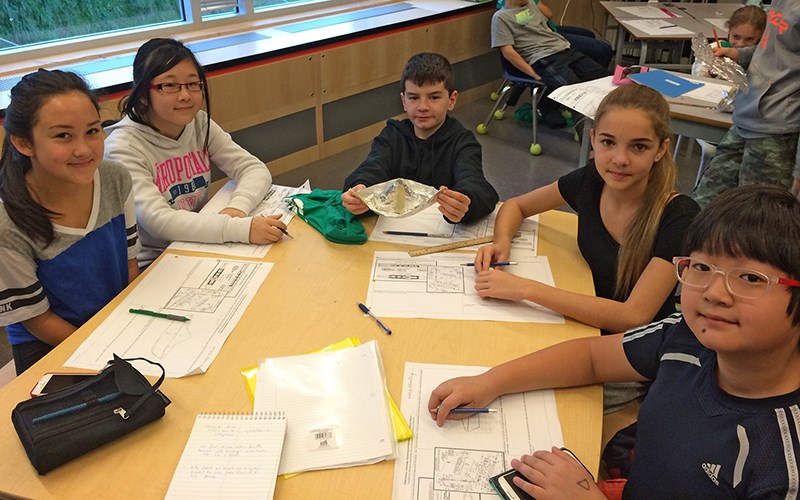School District 43 is introducing the revised kindergarten to Grade 9 curriculum to schools this year and the Tri-City News talked to three teachers about how that work is being done. Marna Macmillan, Sophie Bergeron and Andrea Hunter, all coordinators working with the new curriculum, shared their knowledge and exploded a few myths. Here's what parents need to know.
1. It's not exactly new.
In fact, it has being called "revised" because much of the content is the same, although it has been stepped down a year. For example, topics taught in Grade 10 are now being taught in Grade 9, and and more information about First Nations is being woven in.
What's different, teachers say, is how the curriculum is being taught, with teachers having more flexibility, and students having more say in what they want to explore.
2. Content is still important.
But it's being used to teach "core competencies," such as thinking, communicating and social skills, and more subject specific "curricular competencies." The idea is for educators to teach strategies such as researching, analyzing, synthesizing and communicating in various ways so students can do something with what they learn.
"There were a lot of people relying on teaching the facts where they can Google facts," said Sophie Bergeron, SD43 French co-ordinator. "We want students to understand and then have the skills they can apply to any content
For example, in Grade 2 Language Arts, students won't just be expected to learn to write, they will also need to be able to "comprehend and connect, create and communicate using oral, written, visual, and digital texts."
3. Personal and social competencies get top billing.
The curriculum emphasizes the importance of students learning to understand and care about themselves and others, says Marna Mcmillan, Safe Schools co-ordinator.
"This was a long time in coming. All of us, if we were asked as parents, what we want from this K-to-12 journey, we want kids to know cellular makeup and how to write an essay, and all parents [also] want a child to be kind and compassionate, take perspective, think critically on things, and think outside the box. These are all 21st century skills."
4. The K-9 curriculum revisions come first.
Schools are just now being introduced to the new curriculum, with a full roll-out to take place next year. Meanwhile, the new Grade 10 to 12 curriculum is in draft form, with a 2017/’18 release date scheduled.
5. Teachers are learning it, too.
In September, schools sent a principal, teacher and support worker to learn about the revised curriculum, how it looks and works, and focus groups will delve even more into specific subject areas while upcoming pro-D days be used to share strategies and learning. The province has also kicked in funding for 10 hours of pro-d time for each teacher.
The SD43 District Parent Advisory Council has invited superintendent Patricia Gartland to talk about the new curriculum at its next meeting, Wednesday, Oct. 28 at 7 p.m. in the Gallery Room at Winslow Centre in Coquitlam.
• Find out more about the provincial changes at: www.curriculum.gov.bc.ca.



